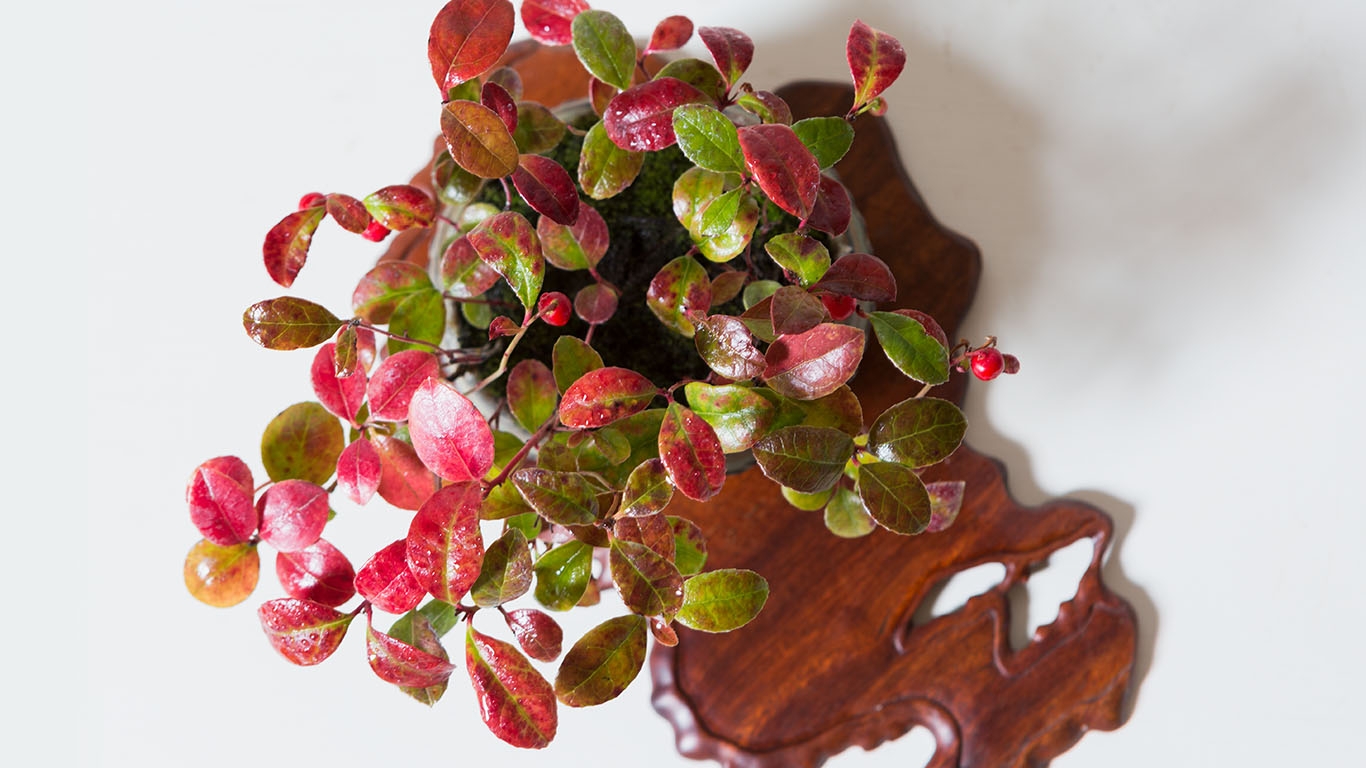Young Choe's Top 10 Kusamono
Kusamono is a subtle, nuanced art not widely practiced in western bonsai. To create a kusamono is to create a scene that evokes a particular season, or a region: its function is to transport the viewer to the wild place these curated creations stem from. Renowned Washington D.C.-based kusamono artist Young Choe returns to Mirai this week to share more of her expertise and knowledge in this elegant art form. To prepare for her visit, we asked her to select 10 of her strongest kusamono works, and tell us why she chose them.
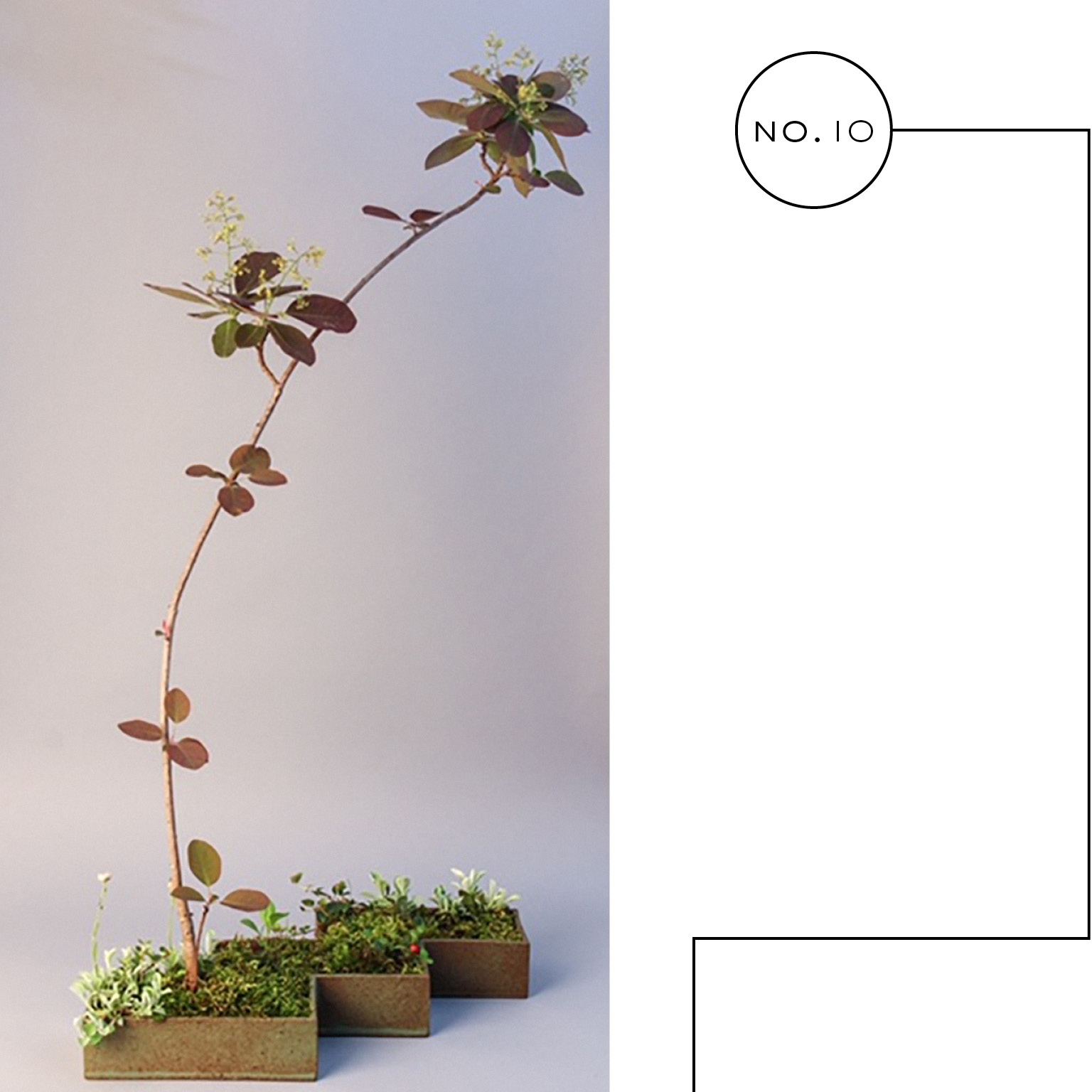
This kusamono started with the unusually curved smoke bush, which I bought at the annual U.S. National Arboretum plant sale. No one else wanted it due to its extreme curve; however, I loved its unique form. I created the kusamono in a unique 3-stepped pot, and planted low-growing native plants beneath it as not to compete with the tree.
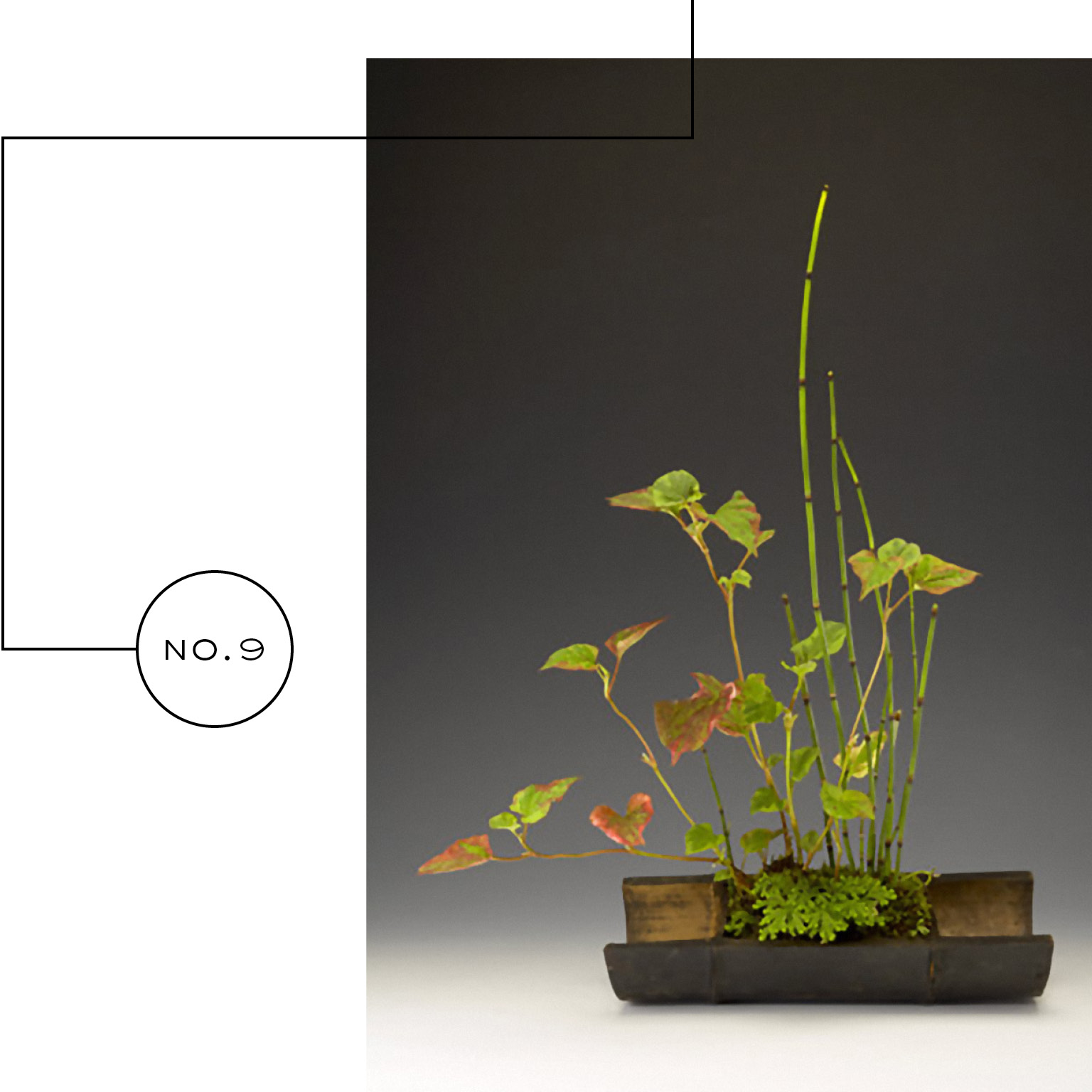
This kusamono was inspired by the charred bamboo pot, which I got in Japan. The bamboo doesn’t have drainage holes, so instead of drilling holes, I created a kusamono with wet-loving plants. Horsetail and houttuynia can be invasive, but they work well together and go with the bamboo. This kusamono develops nice foliage color in full sun, and the greenish-white flowers are showy in late spring.

This Neo-Oribe Japanese pot is a modern interpretation of a 16th-century traditional style. I chose all Asian plants for this kusamono. Spotted bellflower is one of my favorite plants to use: it is small and tough, yet looks humble and has long-lasting blooms. In keeping with the Japanese propensity for odd numbers, I added dwarf black mondo grass.

I created a moss ball 4-5 years ago, and decided to combine it with toad lily and Hakone grass in a Japanese pot to create this kusamono. Season to season, this kusamono looks different—in this early spring image, you can’t see the Hakone grass, and the toad lily’s seed heads are visible. This kusamono includes two different cultivars of toad lily, and one blooms late into the fall.
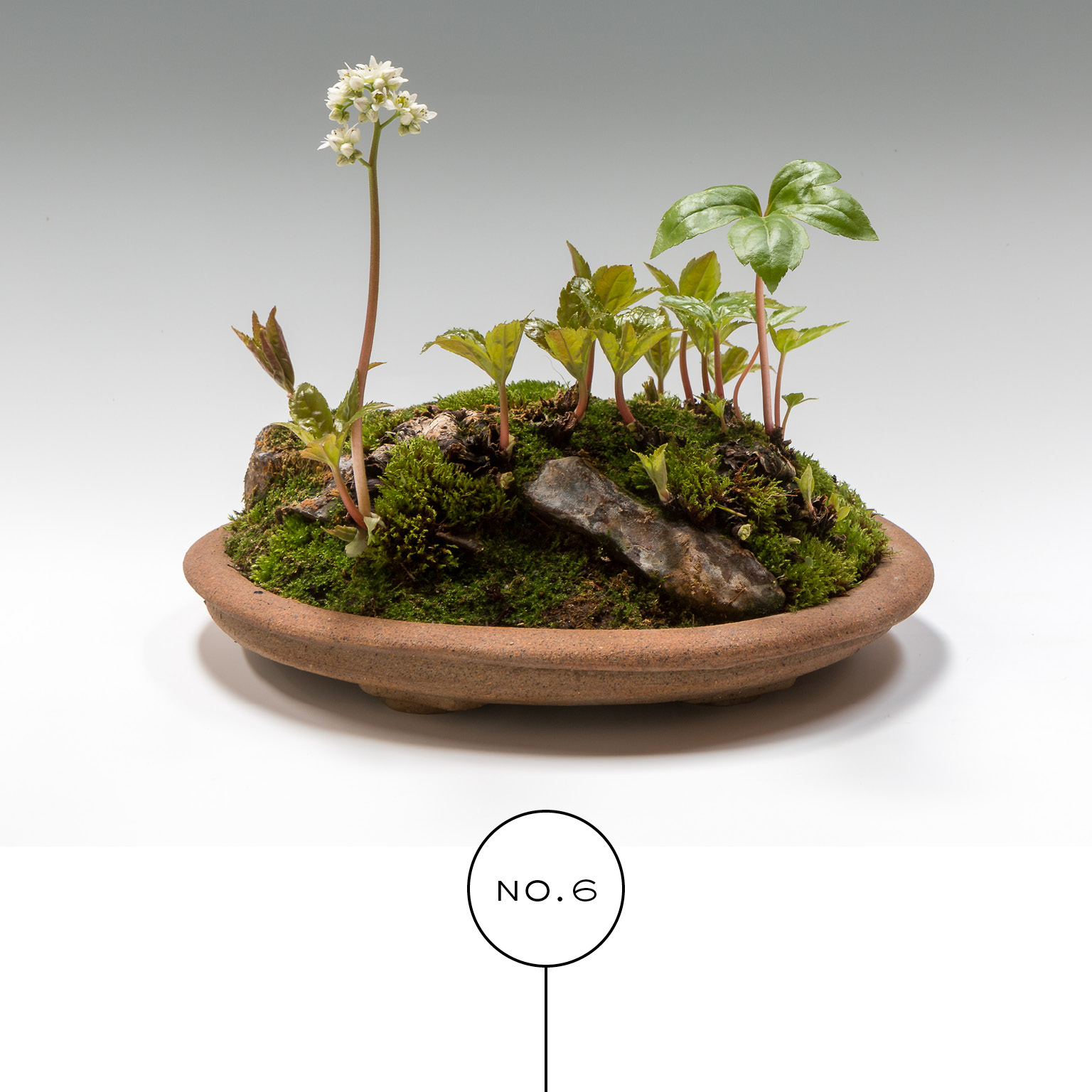
This kusamono is earthy and natural: its unglazed pot, three rocks, and moss on the rocks all speak to its environment. Mukendia rossii is native to rocky slopes in North China and Korea. This kusamono has nice foliage throughout the growing season, and its spring flowers are showy.

For this kusamono, I wanted to focus on plants native to the mid-Atlantic region. The columbine blooms in spring, the foxglove in early summer, and the goldenrod in late summer, making it a very versatile piece. The narrowleaf mountain mint and wild rye grass gives the kusamono a natural look.

I was inspired to create this elegant kusamono by its yellow raku-fired pot. The yellow goldenrod complements the yellow pot beautifully. I also love our native Danthonia grass, but it unfortunately doesn’t like to grow in a container. This year, some of the grass died out, but it was still a beautiful piece.
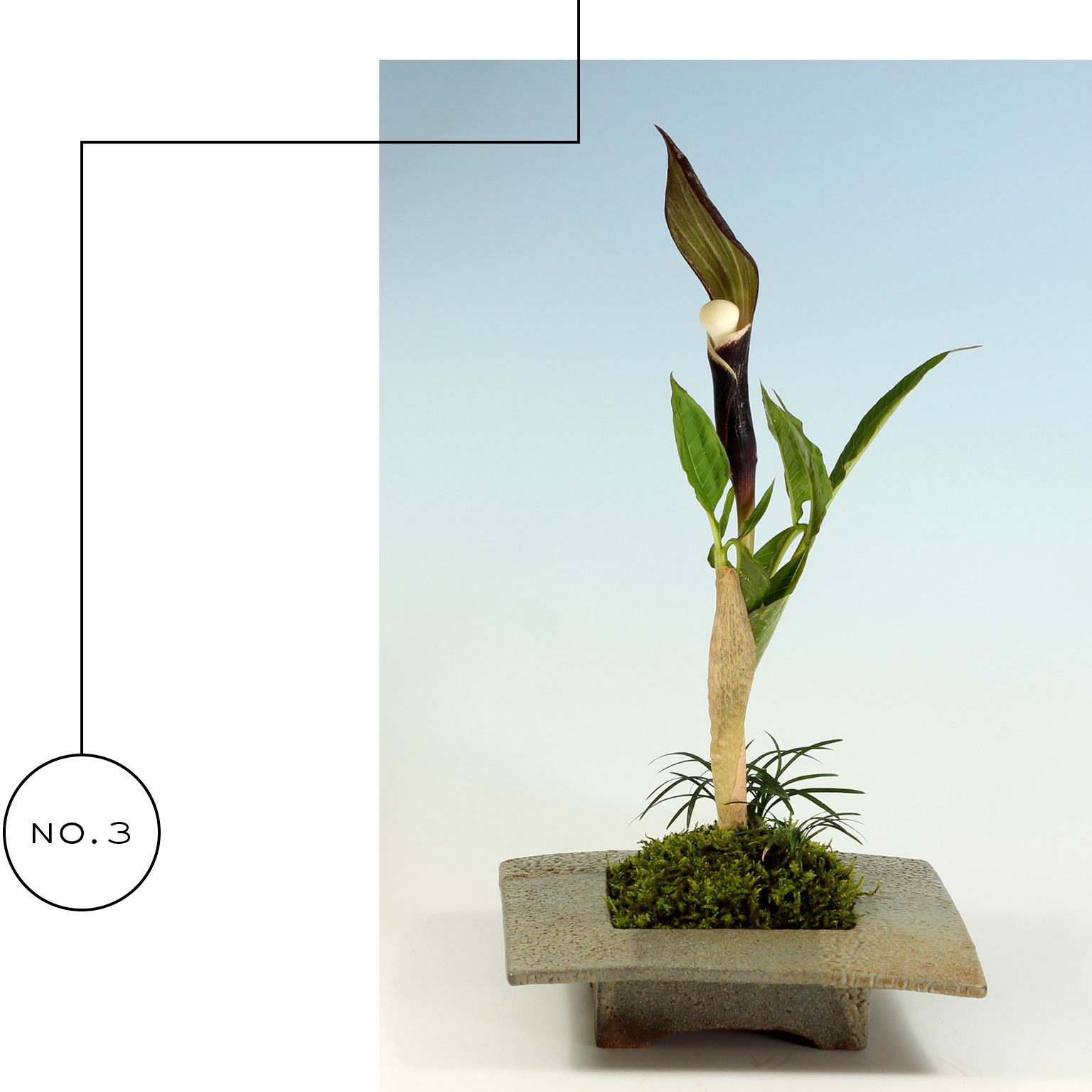
This piece grew from finding a Japanese Jack-in-the-pulpit at the Weyerhaeuser Rhododendron Species Botanical Garden. I couldn’t wait to create a Kusamono with it. The Jack-in-the-Pulpit is an unusual woodland plant that produces a long-lasting flower; it blooms beautifully every spring, and produces a very attractive seed pod in late summer.
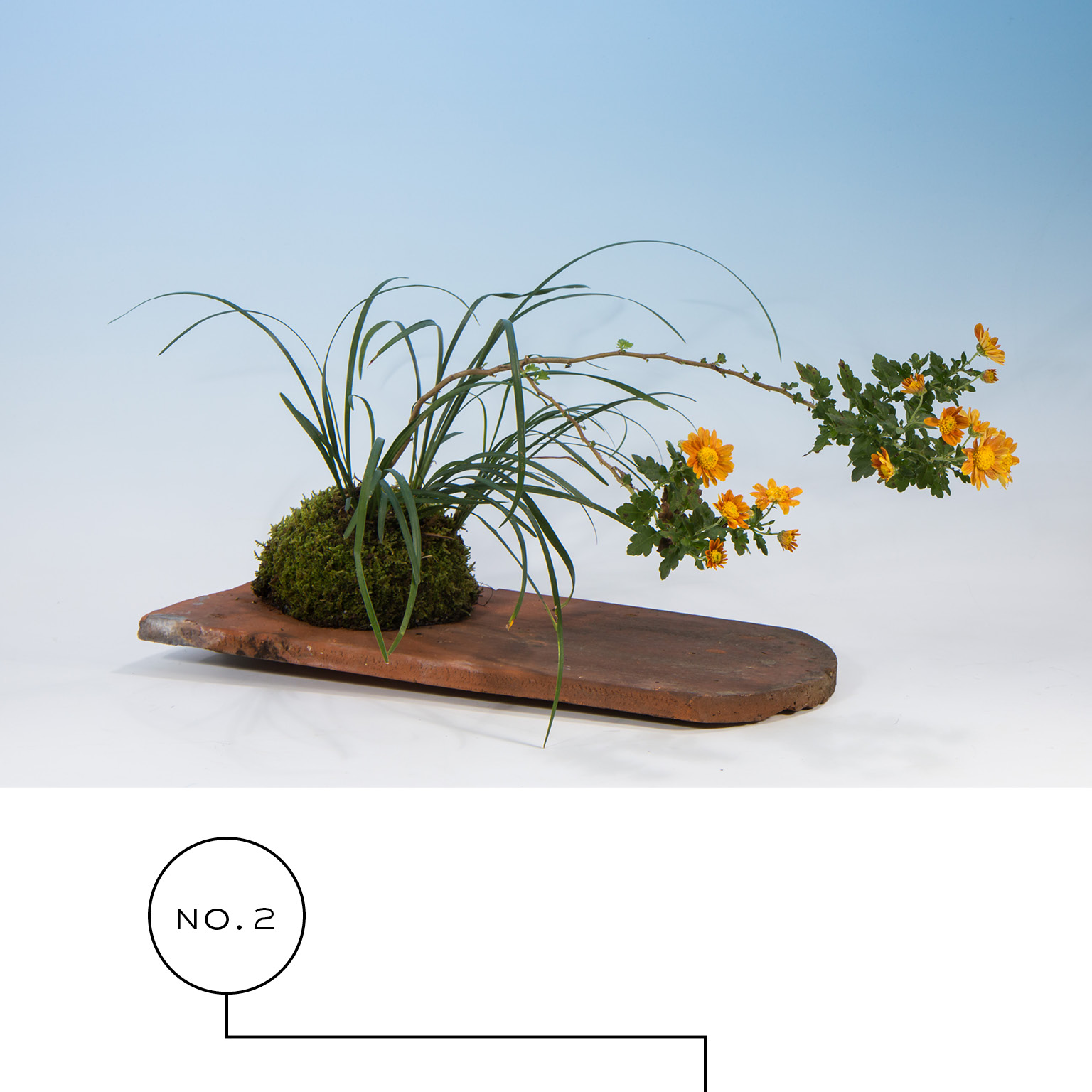
This kusamono was inspired by the roof tile it sits on, which I got in Salzburg, Austria. I decided to use it as a display for a moss ball. I dug up the garden chrysanthemum together with Liriope muscari to create the moss ball; I specifically chose this chrysanthemum because its orange color and lean to the side matched the long narrow tile.
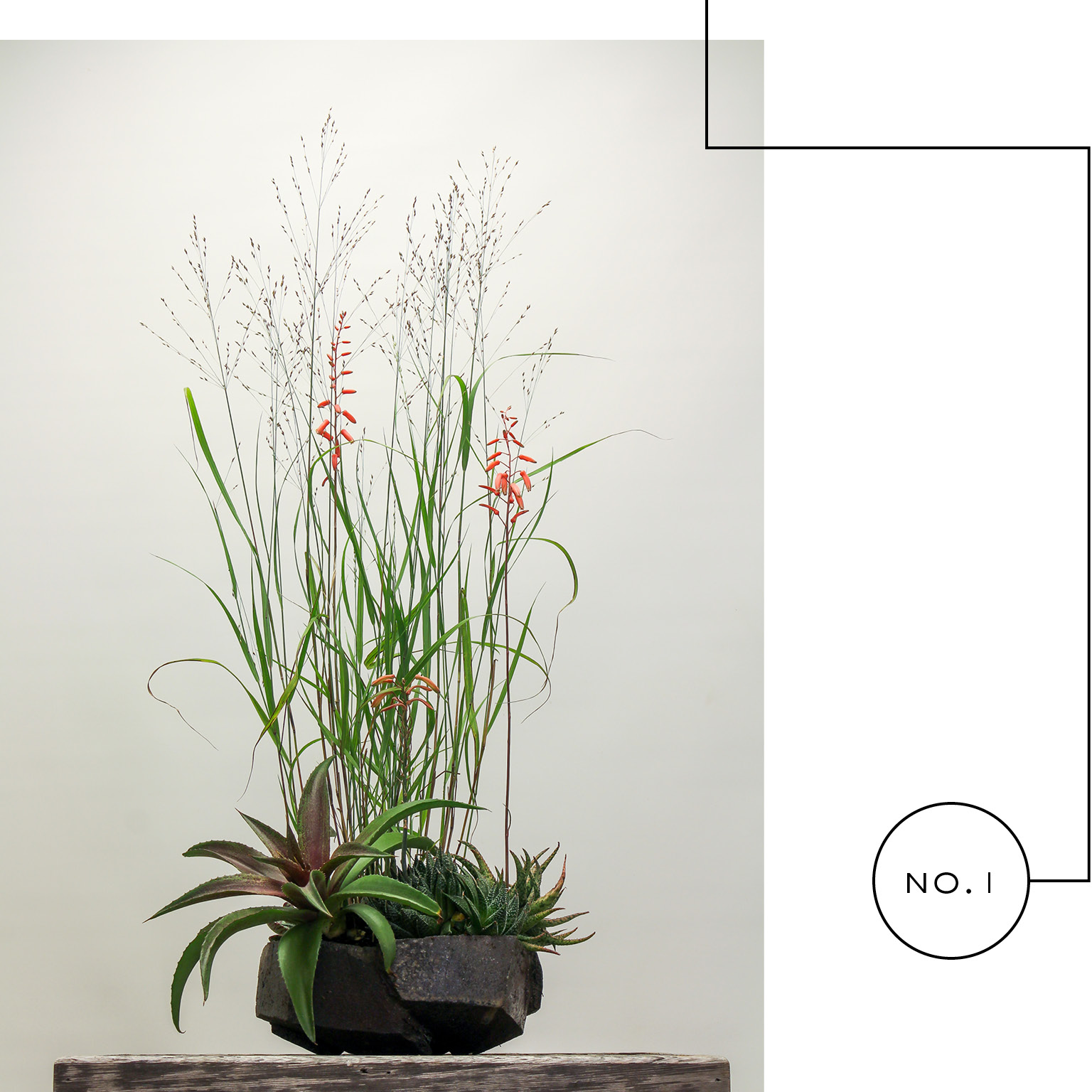
The pot was my main inspiration in creating this kusamono. This pot took 1st place in the Experimental Design category at the 3rd National Bonsai Pot Exhibit. It’s a very masculine pot, fired in the desert, so I wanted to use succulent plants. However, because succulents are low-growing, I wanted to add height to the kusamono, so I added tall switch grasses which do not require much water.
